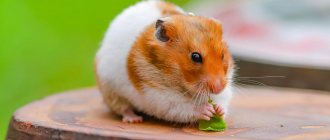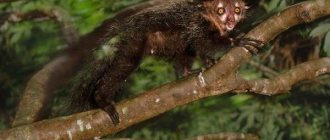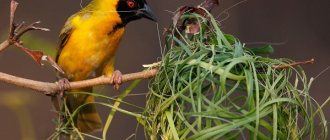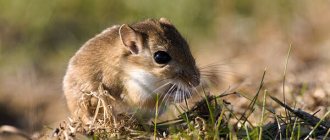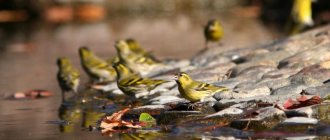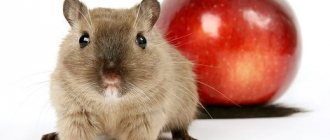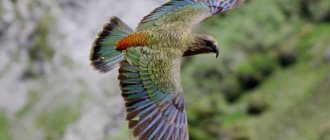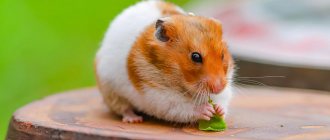Hamsters are cute and fluffy little creatures that sleep during the day and are active at night. But often owners have no idea what passions can occur in the cage at night. The owner is in shock when he sees the consequences. One hamster can easily eat another. Or, which happens quite often, the female eats all the offspring or only part of the cubs. To prevent this behavior, you first need to find out the reasons and eliminate them.
Before getting a hamster, you should study information about care, maintenance and diet. Hamsters are herbivores. Their diet consists of a mixture of grains, vegetables and fruits. Both in the wild and at home, hamsters do not simply eat other hamsters.
The most common mistake owners make is failure to comply with maintenance rules. Such mistakes often result in the adult hamster eating the offspring or even another adult hamster.
In what cases do hamsters eat other hamsters?
- An adult hamster ate another adult hamster.
- The adult male ate his offspring.
- The female ate the male.
- The female ate part of the offspring.
- The female ate all the offspring.
Each action has its own reasons for such behavior. You can avoid such situations by following the rules for keeping adult hamsters and properly caring for a pregnant female.
Features of wild and domesticated hamsters
Many people are well acquainted with hamsters as pets, cute animals, funny and friendly.
But in nature, these inhabitants are dangerous animals, which even outwardly differ significantly from their tamed counterparts. They pose a threat to both humans and the crops grown in the garden.
Content
- 1 Classification 1.1 Relationships between hamster species
- 4.1 Feelings
- 5.1 Feeding
- 6.1 Fertility
- 7.1 Hamsters as pets
Features and habitat
In 1930, an animal similar to a hamster . Interest in this animal was based on the search for the “Syrian mouse”, with which children played back in Ancient Assyria. His offspring became the progenitors of the modern large family of hamsters.
The spread of rodents in Central Asia, the steppe regions of Eastern Europe, and then extensive settlement to China and the United States was partly associated with the use of animals as laboratory material and the domestication of unpretentious creatures. In total, there are over 20 species of self-spreading rodents of the main breed of the steppe hamster (common).
Pictured is a steppe hamster
This is a small animal up to 35 cm long, with a dense body, a large head on a short neck. The tail reaches 5 cm. Weight averages up to 600-700 g. Small ears, antennae on the muzzle and black expressive eyes in the form of large beads create a cute appearance for a fluffy bun on short legs with fingers armed with short claws for digging holes and holes.
The animal is protected by sharp and strong teeth, which are renewed throughout its life. A hamster's coat consists of a base of hair and dense undercoat, which provides protection even on sub-zero cold days. The coat color is most often yellow or brown; tricolor spotted, black and white individuals are less common.
There are more than 40 bred varieties with shades of red, orange and gray, spots of different shapes and locations. The distribution area of hamster animals is wide due to their unpretentiousness. It can adapt almost anywhere: mountainous places, steppes, forest belts, suburbs - it hides in burrows from enemies and bad weather.
The main living condition is the availability of food. Animals are very fond of areas along grain fields; they often locate their burrows directly on arable land. Various pesticides and herbicides in land cultivation force animals to leave their homes and move to other places. Human settlements attract people with an abundance of food, so steppe inhabitants often visit barns and courtyard buildings with supplies.
A special feature of hamsters is their amazing thriftiness. The burrows reach gigantic sizes compared to the size of the animals: up to 7 m wide and up to 1.5 m deep. In storage facilities, the weight of accumulated food is hundreds of times greater than the weight of an average-sized hamster.
Special cheek pouches in the form of elastic folds of skin make it possible to carry up to 50 grams of food by increasing the volume several times. Farmers suffer losses from hamster robberies. Entire systems have been developed to counter rodent infestations. They themselves are also the object of hunting in nature for birds of prey and owls, stoats and ferrets.
Classification
M. auratus
, Syrian hamster
P. sungorus
. Winter white dwarf hamster
P. roborovsky.
Roborovski hamster
P. campbelli
. In Campbell's Hamster
Taxonomists generally disagree about the most appropriate placement of the subfamily Cricetinae within the superfamily Muroidea. Some place it in the family Cricetidae, which also includes voles, lemmings, and New World rats and mice; others group it all into a large family called Muridae. Their evolutionary history is recorded by 15 extinct fossil genera and extends from 11.2 million to 16.4 million years ago to the Middle Miocene epoch in Europe and North Africa; in Asia - from 6 to 11 million years. Four of the seven living genera include extinct species. One extinct Cricetus
, for example, lived in North Africa during the Middle Miocene, but the only surviving member of this genus is the European or common hamster of Eurasia.
- Subfamily Cricetinae
Genus
Allocricetulus
Species A. curtatus - Mongolian hamster. - Species A. eversmanni - Eversmann's hamster or Kazakh
- Species C. canus - Gansu hamster
- The species C. alticola is the Tibetan dwarf or Ladakhi hamster.
and
C. obscurus
- Chinese striped hamster, also called Chinese hamster; striped dwarf hamster
- Species C. cricetus is the European hamster, also called the common hamster or black-bellied field hamster.
golden hamsters.
- Species M. auratus - golden or Syrian hamster.
dwarf hamsters.
- Species P. campbelli - Campbell's dwarf hamster.
- Species T. triton is the larger long-tailed hamster, also called the Korean hamster.
Relationships between hamster species
Hoards of hamsters
Neumann et al.
(2006) performed a molecular phylogenetic analysis of 12 of the 17 species above using DNA sequences from three genes: 12S rRNA, cytochrome b, and von Willebrand factor.
They found the following relationships: [5] Phodopus
group Phodopus was found to
represents the earliest split among hamsters.
Their analysis included both species. Results from another study [6] suggest that Cricetulus kamensis
(and presumably the related
C. alticola
) may either belong to this
Phodopus
or occupy a similar basal position.
Mesocricetus
group Genus Mesocricetus
also forms a clade.
Their analysis included all four species, with M. auratus
and
M. raddei
forming one subclade and
M. brandti
and
M. newtoni
the other.
Other genera
The remaining genera of hamsters form the third major clade. Two of three selected Cricetulus
represent the earliest split.
This clade contains C. barabensis
(and the putatively related
C. sokolovi
) and
C. longicaudatus
.
Miscellaneous
The remaining clade contains representatives of Allocricetulus
,
Tscherskia
,
Cricetus
and
C. migratorius
.
Allocricetulus
and
Cricetus
were sister taxa.
Cricetulus migratorius
was their next closest relative, and
Tscherskia
was the basal one.
Character and lifestyle
By their nature, hamsters are loners, aggressive against anyone who encroaches on their territory. They protect their possessions up to 10-12 hectares in size. The size of the enemy does not matter; there are known cases of rodent attacks on large dogs.
If related rodents run away from meeting a person, steppe hamsters may attack. Rodent bites are painful, can cause infection with many diseases, and leave lacerations.
Ruthlessness manifests itself even towards its own individuals. The weaker ones will not escape alive from their strong and toothy relatives if they consider them an enemy during mating time or simply notice an unwanted guest near their reserves. The activity of the animals manifests itself at twilight. Hamsters are nocturnal animals . During the day they hide in holes, gaining strength for fearless hunting.
Deep dwellings are located 2-2 meters underground. If the soil allows, the hamster will go as deep as possible into the soil. The living chamber is equipped with three exits: two “doors” for ease of movement, and the third leads to a pantry with supplies for the animals’ winter life.
The hamster uses the accumulated food only during hungry, frosty times and at the beginning of spring. In other seasons, food consists of food from the external environment. Above the burrows there are always dug piles of earth, sprinkled with grain husks. If cobwebs have accumulated at the entrance, then the home is abandoned; hamsters keep the houses clean.
Not all hamsters hibernate; some species even turn white so that their forays into the snow cover are unnoticeable. Those who wait out harsh weather in shallow sleep periodically stay awake to refresh themselves with accumulated reserves. When the earth begins to warm up, in February, March or early April, it is time for the final awakening.
But before leaving completely, the hamster will still feast on supplies, gain strength, and then open the entrances and exits of the hole. The males emerge from the burrows first, and the females a little later.
Peaceful relations between them are established only during the marriage period, otherwise they exist on equal terms. Hamsters' ability to swim well is amazing. They inflate their cheek pouches like a life jacket that keeps them afloat.
Natural enemies
Like any wild animal, the Djungarian hamster has its enemies. Since hamsters live mainly in semi-deserts and steppes, their main enemies are birds of prey. During the day they are hunted by hawks and other representatives of this family, and at night by owls and eagle owls.
For rodents living in forest-steppes, terrestrial predators pose a particular danger: foxes, wolves, lynxes, stoats, badgers, martens, ferrets and sables. Also dangerous for Djungarians are cats and hunting dogs, which often attack hamsters that settle near populated areas.
Djungarian hamsters are saved from sudden attacks by predators because of their excellent hearing. If the sound is not loud, then the dwarf will run to hide in its burrow house or other secluded place. If the sound is clear and loud, and there is no way to hide, then the hamster freezes in place, hoping to remain unnoticed. In the case when this method does not work, the jungarik stands on its hind legs, takes a frightening pose and makes aggressive sounds.
This method helps to protect yourself. He can also use his sharp teeth and claws when fighting an opponent. Moreover, this applies not only to predators, but also to rival hamsters: if one of these wanders into someone else’s territory, he will immediately receive the first warning.
Moreover, sharp sounds are designed not only to scare away enemies, but also to notify relatives of the danger that has arisen. This feature has led to the nickname “singing hamsters” being assigned to the animals.
Djungarians are small, vulnerable creatures, but nature itself took care of their protection. She awarded the hamsters of this species with a fur coat that blends with the environment; even in winter, the animals molt and replace their fur with white. In English they are called winter white dwarf hamsters.
So all predators taken together cannot destroy Djungarian hamsters as a species; they only manage to contain the number of small fluffy creatures.
Hamster nutrition
The diet of rodents is varied and largely depends on the region where they live. Grain crops will predominate near the fields, and vegetable and fruit food will predominate near human habitation. It is not uncommon for hamsters to attack young chicks if there is no one to protect them.
On the way to vegetable gardens or orchards, animals will not refuse small insects and small animals. The diet is dominated by plant foods: corn grains, potatoes, pea pods, rhizomes of various herbs and small shrubs.
Near human habitation, hamsters eat everything and are an excellent poacher. Residents always try to get rid of such neighbors. Whatever hamsters eat, winter supplies are collected from various grains and plant seeds.
Animal color
The common hamster, whose photos are often distributed throughout the Internet, has a rather attractive appearance. Bright colors predominate on the body. The back and sides of the animal are predominantly red. The abdomen and chest are black. The nose and paws are almost always white. And on the chest at the side of the head there are often 3 white spots. In general, color depends on where you live. Sometimes you can find a rodent that is completely black or black and white in color. Such a beautiful appearance thanks to people is the main problem of the animal. Many people hunt him for his skin. Often even specially trained dogs enter.
Reproduction and lifespan of a hamster
Hamsters reproduce quickly and actively due to the fact that the male has several families. If he is defeated by a strong relative in a mating dispute, then he will always have another female to continue the race.
Offspring are born several times a year, each litter consisting of 5-15 cubs. Having appeared blind and bald, hamsters already have teeth, and on the third day they are covered with fluff. After a week they begin to see. At first they live in the nest under the close supervision of the mother.
The female can even take care of other people's babies. But the children, if they don’t accept the foundling, they can crush him. In nature, animals do not live long, up to 2-3 years. In captivity, with good care, the lifespan of pet hamsters increases to 4-5 years.
It is interesting that small cubs, 1-2 months old, when entering the home world of people, are not aggressive. buy a hamster for a child without fear, but you just need to remember that leaving it quickly can become a psychological trauma.
At the same time, it is useful even for children to distinguish between Norman the hamster from the popular cartoon and a living creature with its own needs and character.
Tame and playful hamsters, such as Djungarian hamsters, will bring joy and excitement to any family. But the little steppe resident requires care and attention to his needs. A hamster can become a favorite of both children and adults.
Etymology
The name "hamster" is a German loanword that comes from the earlier Middle High German hamastra
.
It may be related to the Old Church Slavonic khomestoru
, which is a mixture of the root of Russian khomiak (
khomyak
) "hamster" and the Baltic word (cf. Lithuanian
staras
"hamster");
[9] or of Persian origin (cf. Av hamaēstar
"oppressor").
[10] The collective noun for a group of hamsters is "horde". [11] [ need better source
]
Hibernation or torpor
Hamsters can hibernate for a variety of reasons. This usually happens due to a sharp drop in temperature and lack of water. The rodent's body becomes hard and cold, and its breathing becomes rare and uneven.
If “wintering” began at an unexpected time or the rodent clearly did not prepare for it (did not make supplies and did not build a nest), be sure to wake it up. Otherwise, he may die from starvation and dehydration. In this case, we are not dealing with natural hibernation, but with torpor. To do this, place the animal in a warm place. For example, you can wrap him in a towel and pick him up. Do not block the access of air, that is, do not wrap the muzzle! Do not place it near heating devices or fire. When he wakes up, he will begin to tremble and stretch. Continue heating until your body temperature rises and your breathing rate returns to normal. Typically, the entire awakening process takes from 30 minutes to an hour.
Analyze what caused the numbness. Maybe the cage was drafty or you didn't give the animal enough food and water? Avoid making these mistakes in the future, as frequent numbness can pose a serious threat to your health.
Recommendations
- https://animaldiversity.org/accounts/Cricetinae/
- ^ abcdef Fox, Sue. 2006. Hamsters
. TFH Publications Inc. - ^ abcdef Barry, Anmarie. 1995. Hamsters as a new pet. TFH Publications Inc., NJ ISBN 0-86622-610-9.
- ↑
Patricia Pope Bartlett (2003). Hamster Handbook. Barron's Educational Series. paragraph 113. ISBN 978-0-7641-2294-1. - Neumann, K; Michaux, J; Lebedev, V; Yigit, N; Colak, E; Ivanova, N; Poltoraus, A; Surov, A; Markov, G (2006). "Molecular phylogeny of the subfamily Cricetinae based on mitochondrial cytochrome b and 12S rRNA genes and the nuclear vWF gene" (PDF). Molecular phylogenetics and evolution
.
39
(1): 135–48. DOI: 10.1016/j.ympev.2006.01.010. PMID 16483801. - ↑
Lebedev V.S., Ivanova N.V., Pavlova N.K., Poltoraus A.B.
2003. Molecular phylogeny of Palaearctic hamsters. In
proceedings of the International Conference on Taxonomy, Phylogeny and Paleontology of Small Mammals, dedicated to the 90th anniversary of Professor I. M. Gromov (ed. A. Averyanov and N. Abramson). Saint Petersburg. - ^ abcd Fritsche, Peter. 2008. Hamsters: A Complete Guide for Pet Owners. Educational Series Barron's Inc., NY ISBN 0-7641-3927-4.
- ^ abcde Koonen, G. (2002). Comfortable housing for hamsters in research institutions. In Comfortable Facilities for Laboratory Animals, Ed. W. Reinhardt and A. Reinhardt. Animal Welfare Institute, Washington, DC. pp.33–37
- Douglas Harper, Online Dictionary of Etymology
, entry for "hamster" - Merriam-Webster Collegiate Dictionary, st. "hamster" (May 29, 2008) Merriam-Webster.com
- https://www.answers.com/Q/What_is_a_group_of_hamsters_called
- King, LeeAnn Engfer; photographs by Andy (1997). My pet hamster and gerbils
. Minneapolis: Lerner. paragraph 13. ISBN 978-0822522614. - ↑
Thomas A. Scott (1995). Concise Encyclopedia of Biology (Rev. ed.). Berlin: Walter de Gruyter. paragraph 299. ISBN 978-3110106619. - ^ abc "Anatomy | About hamsters | Hamsters | Guide | Omlet US". www.omlet.us
. Retrieved November 20, 2022. - Bartlett, Patricia Pope; Earl-Bridges, Michelle (2003). Hamster Handbook. Barron's Educational Series. clause 21. ISBN 9780764122941.
- ^ a b "Hamster body language and behavior: what does it mean". Pet care
. Retrieved November 20, 2022. - ^ a b "All about keeping hamsters as pets". Spruce pets
. Retrieved November 20, 2022. - "Is this safe for your hamster?" . Spruce pets
. Retrieved November 20, 2022. - ^ab "hamster". Encyclopædia Britannica. Standard version. Chicago: Encyclopedia Britannica, 2007.
- Petri, Inez; Dumbell, Rebecca; Scherbarth, Frank; Steinlechner, Stefan; Barrett, Perry (2014). "Effects of exercise on photoperiod-regulated hypothalamic gene expression and peripheral hormones in the seasonal dwarf hamster Phodopus sungorus". PLOS One
.
9
(3):e90253. Bibcode: 2014PLoSO...990253P. DOI: 10.1371/journal.pone.0090253. PMC 3946023. PMID 24603871. - ^ ab https://www.britishhamsterassociation.org.uk/get_article.php?fname=journal/hibernation.html
- Gattermann, R.; Fritzsche, P.; Neumann, K.; Al-Hussein, I.; Kayser, A.; Abiad, M.; Yakti R. (2001). "Notes on the modern distribution and ecology of wild golden hamsters (Mesocricetus auratus)." Journal of Zoology
.
254
(3):359–365. DOI: 10.1017/S0952836901000851. - Musser, Guy. "Hamster | Facts and breeds". Encyclopedia Britannica
. Retrieved February 1, 2022. - “How soon can you take the hamster away from its mother?” . animals.mom.me
. Retrieved November 20, 2022. - "Leonard Goodwin - Telegraph". Daily Telegraph
. January 14, 2009. Retrieved January 18, 2009. - ↑
Testimony of Grant Riddle (born 1929, lives in Wildwood Lake, California), who had a pet hamster in 1942. - ^ abcd Logsdale, Chris; Logsdale, Peter; Hovers, Keith (2002). Hamsterlopaedia: A Complete Guide to Hamster Care
. Lydney: Ringpress. item 161. ISBN. 978-1860542466.
